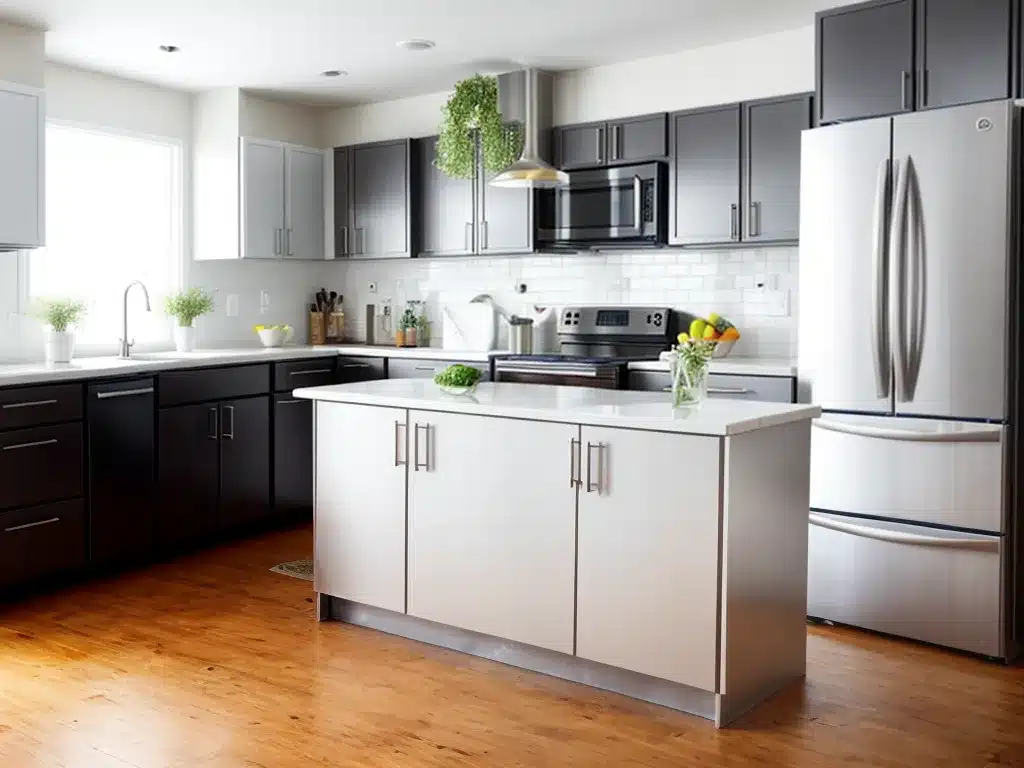To keep your kitchen looking its best, a thorough cleaning is needed on a regular basis. With a few professional cleaning tips and tricks, you can get every nook and cranny spotless in no time.
Deep Cleaning the Floors
The floors take a lot of abuse in the kitchen from spills, drips, crumbs, and dirt. To get them properly clean:
-
Sweep or vacuum the floors first to remove any loose dirt and debris. Get into corners and along edges.
-
Mop using a cleaning solution of warm water and a few drops of dish soap or vinegar. Let it sit for a few minutes before scrubbing.
-
For tough stains like grease, sprinkle baking soda and let sit before scrubbing. Rinse well.
-
Disinfect floors with a non-toxic cleaner or a mix of 1 cup vinegar per 1 gallon of water. This helps kill germs.
-
Use a toothbrush to scrub tight spaces like where the floor meets the wall.
-
Don’t forget to clean underneath movable appliances and furniture.
Sanitizing Countertops and Backsplash
Kitchen countertops need sanitizing to remove bacteria that can cause illness. Here’s how:
-
Remove everything from the counters and wash down with hot soapy water. Rinse well.
-
Disinfect using a non-toxic cleaner or mix of 1 tbsp bleach per 1 quart of water. Spray and let sit for 5 minutes before wiping.
-
For the backsplash, spray cleaner and let it set before wiping down with a sponge or soft cloth. Use an old toothbrush for grout.
-
Go over the counters with a disinfectant wipe for an extra clean finish.
Cleaning Inside the Refrigerator
A spotless fridge helps keep food fresher longer. Follow these tips:
-
Remove everything from the shelves. Throw out old or expired food.
-
Use baking soda and water to scrub shelves, drawers, and sides. Rinse with clean water and dry.
-
Wash removable parts like shelves and drawers with hot soapy water. Dry completely before replacing.
-
Vacuum coils underneath or behind the fridge to improve efficiency.
-
Disinfect door handles and fronts of shelves with a non-toxic cleaner.
-
Replace items using an organized system like grouping similar items. Keep foods you use often in front.
Deep Cleaning the Oven and Stove
Burned on food and grease can make appliances hard to clean. Use these steps:
-
For the oven, mix baking soda and water into a spreadable paste. Spread over interior surfaces. Let sit overnight before scrubbing clean.
-
Use a razor to gently scrape off any chunks or burned on bits in the oven or stove top.
-
Boil a pot of water on the stove for 10 minutes to loosen grease. Scrub with steel wool.
-
Glass stovetops can be cleaned with a mix of equal parts vinegar and water. Rinse and dry completely.
-
Scrub drip pans and rings with soapy steel wool. For tough stains, boil in water and baking soda.
-
Clean knobs and handles using either warm soapy water or disinfectant wipes.
Keeping the Sink Sparkling
A clean sink makes washing dishes less unpleasant. Get it shining by:
-
Mix 1 cup baking soda with 1/4 cup cream of tartar and sprinkle down the drain. Rinse with boiling water.
-
Scrub the basin with a powdered cleanser or baking soda. Use an old toothbrush for tough stains.
-
Remove mineral deposits with white vinegar. Pour down drain and let sit before rinsing.
-
Disinfect and deodorize with either 1 cup vinegar or 1 cup bleach down the drain followed by hot water.
-
Prevent future buildup by putting a drain cover down when not in use.
Do’s and Don’ts of Kitchen Cleaning
Follow these extra tips for a sparkling kitchen:
DO:
- Wear gloves when using harsh cleaners
- Clean spills right away
- Allow cleaners time to work before wiping
- Work from top to bottom
DON’T:
- Mix bleach and vinegar, causes toxic fumes
- Use harsh chemicals on stone or wood
- Let grease build up on surfaces
- Use abrasive pads on stainless steel
With the right techniques and a little elbow grease, you can whip every surface of your kitchen into shape. Stick to a regular cleaning routine for a constantly spotless space.







